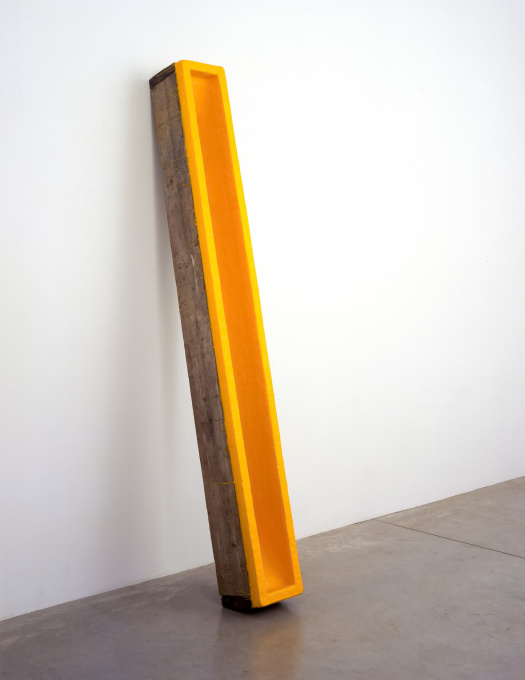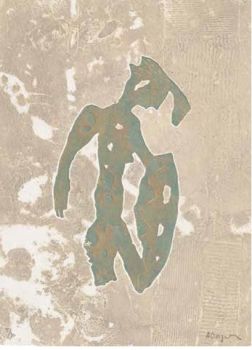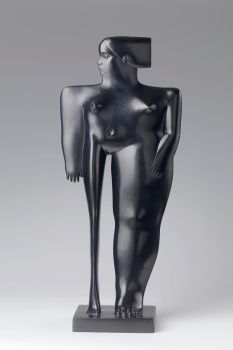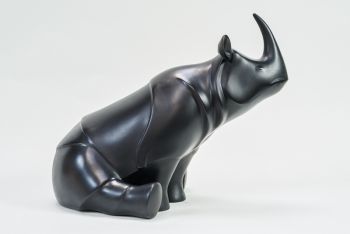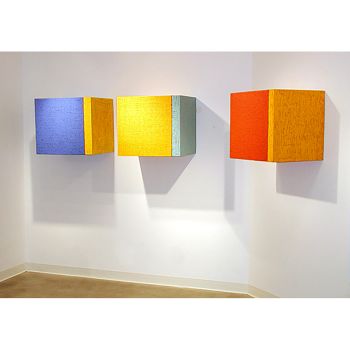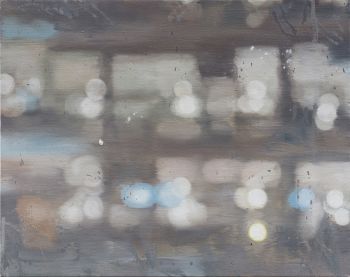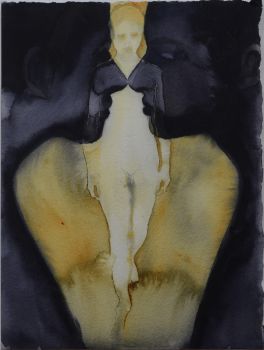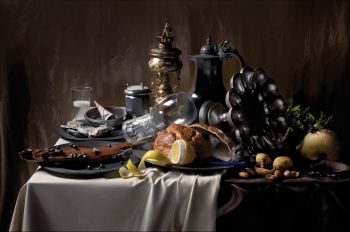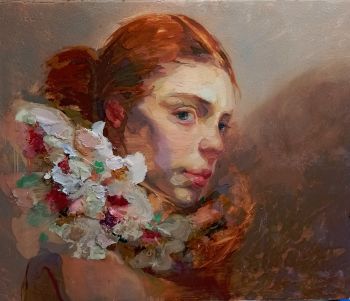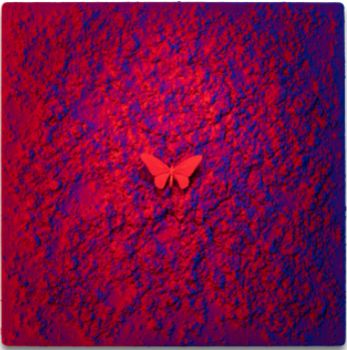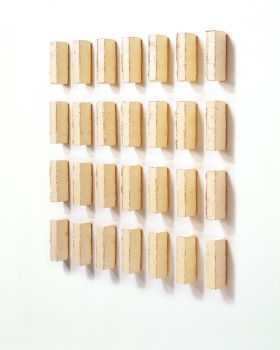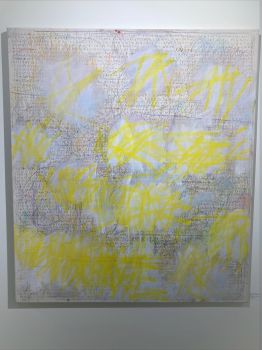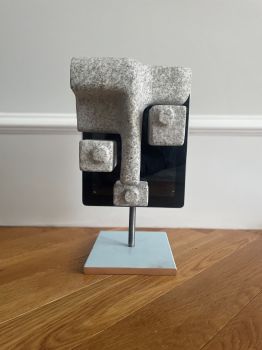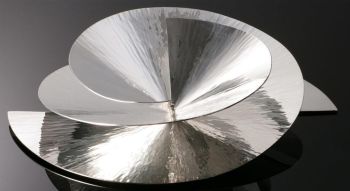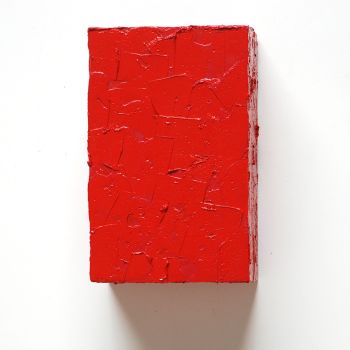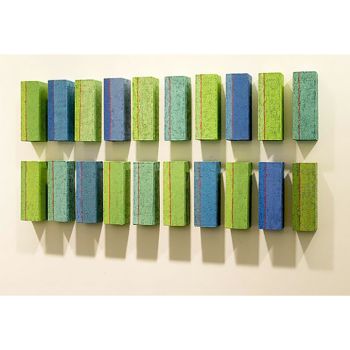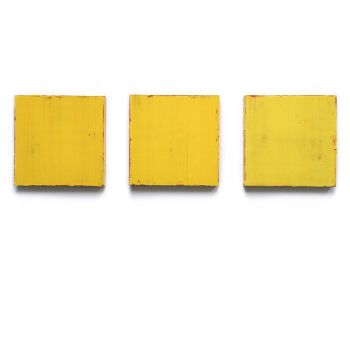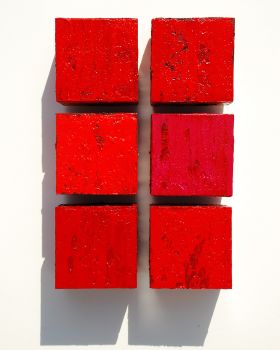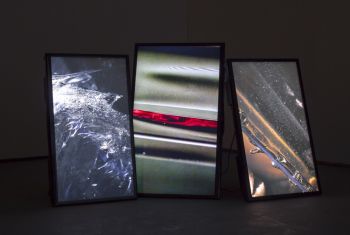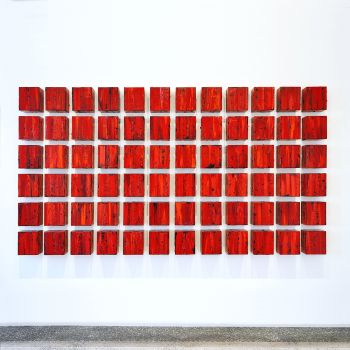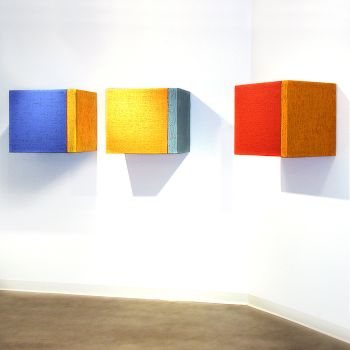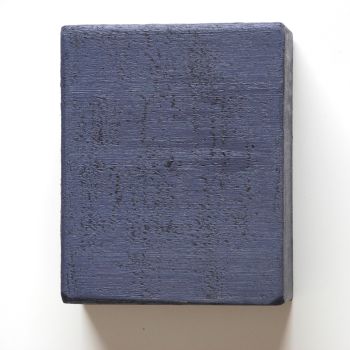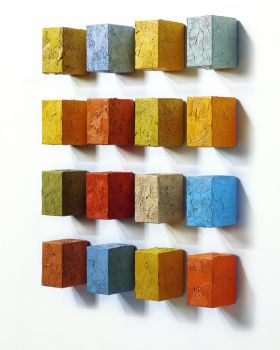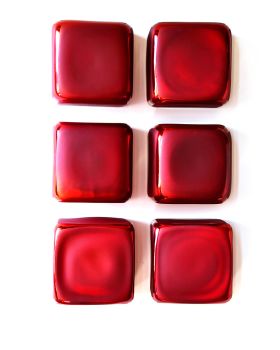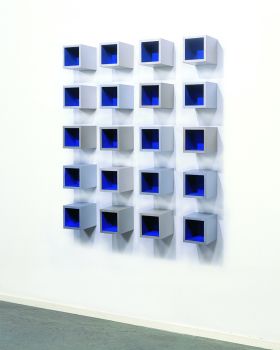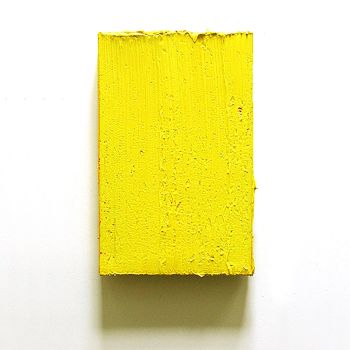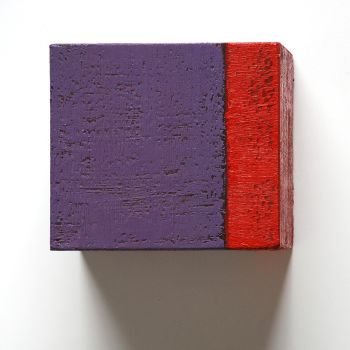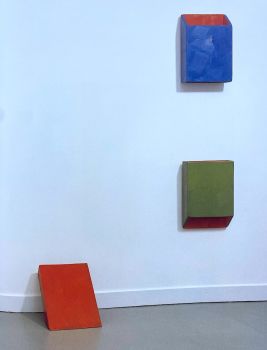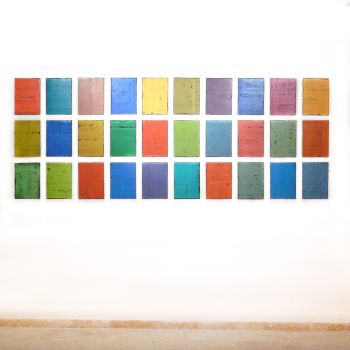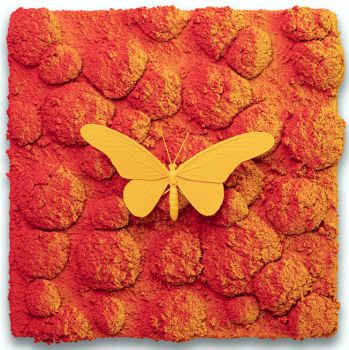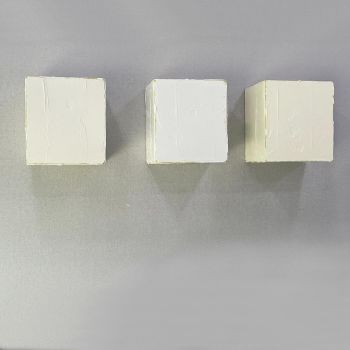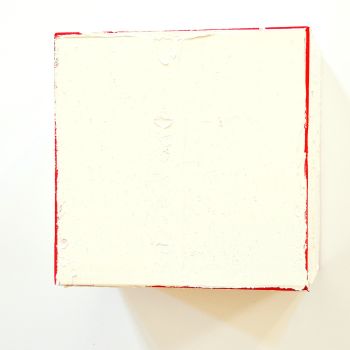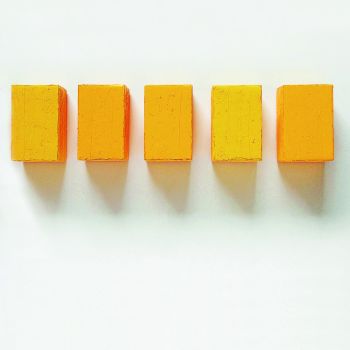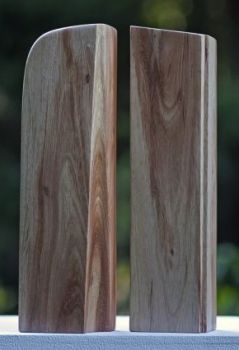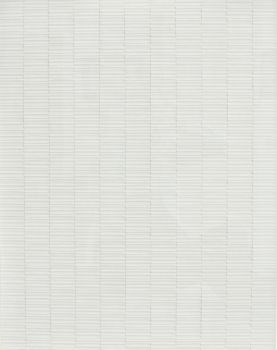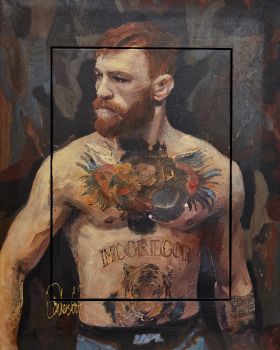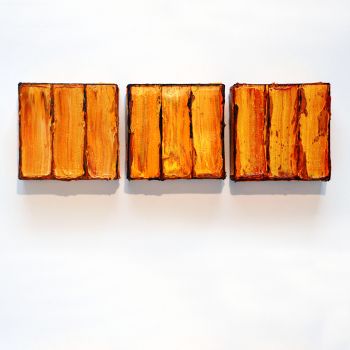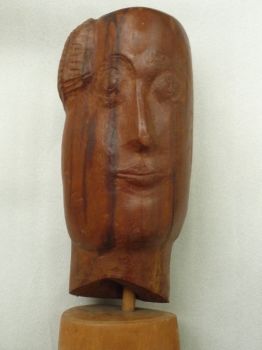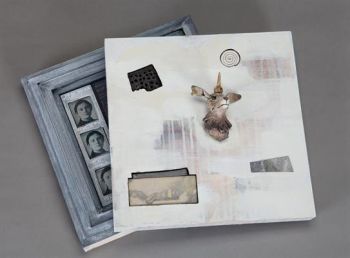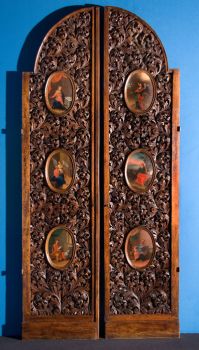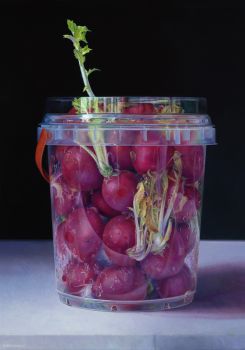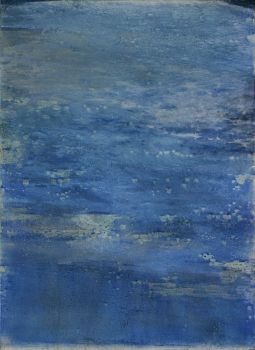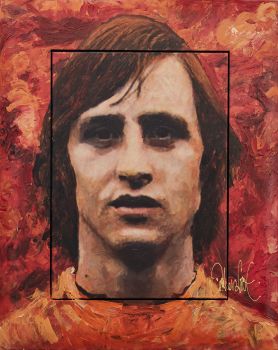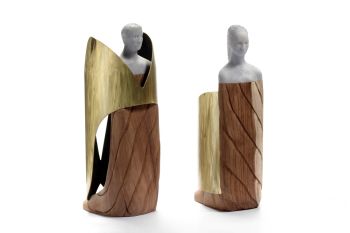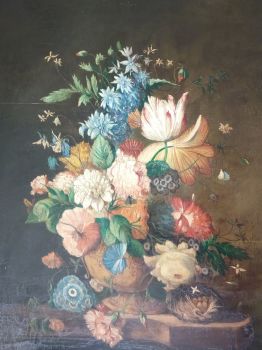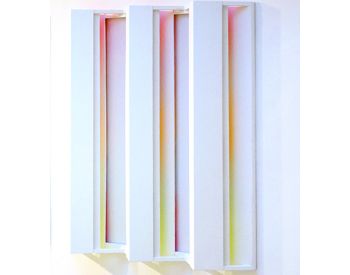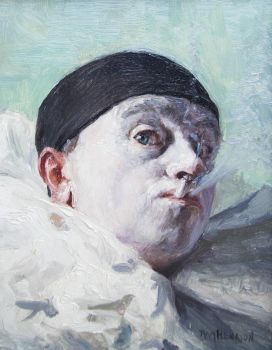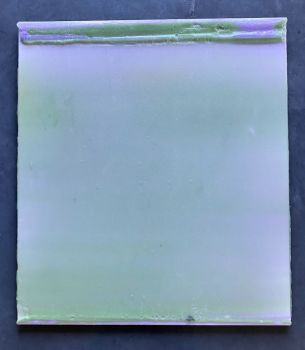Troug- Cadmium Yellow Deep 2003
JOHANNES GIRARDONI
MadeiraCeraCera de abelha
254 ⨯ 28 ⨯ 55 cm
ConditionNeeds restoration
€ 5.000
Gallerease Selected
- Sobre arteExhibited in Museum Ludwig 2005
Part of Series 2003–2011, Beeswax, pigment, wood
Light Reactive Organic Sculptures comprise an extensive body of work that has evolved over the past two decades. The work focuses on reductive investigations at the intersection of sculpture and painting, and explores the continuously shifting relationship between light and material. Despite an elemental material vocabulary — found wood, beeswax, and pigment — the work’s physical constellation becomes both the carrier of an explicitly painterly event, while also being the foundation of an immaterial phenomenon. The pieces are often examinations of phenomenological processes, where a hollow or empty space — a tangible emptiness — turns out to be the actual center of the work. Opposites and contradictions, as well as the complex dialectic between them, are the fundamental themes. The orchestration of material and light, presence and absence, things found and things formed, all resist clear fixation, thereby maintaining and creating works with their own non-derivable reality.
The primary material organization is found wood that forms the base for color built with pigment and beeswax. The wood is harvested from urban debris at building constructions and deconstructions, and in its worn and deteriorated condition, creates an instant history. These structures become the foundation for an architecture of color in which the material is color, and the color is material. Built by suspending varying degrees of pigment in layer over thin layer of beeswax, light travels into the wax and encircles the pigment. This results in light reactivity, and juxtaposed to the static, aged structure of the wood, the sculptures’ pigmented wax evolves and adapts to changing ambient light situations. These sculptures hold light.
"Girardoni’s use of wax, influenced by Jasper John’s paintings with encaustic — such as Flag and Target — and related to Brice Marden’s use of the material in his opaque, monochrome pictures from the 1960s, ultimately led the artist to sculptural procedures: “Wax catalyzed the move away from ‘painting’ … The beeswax allowed me to ‘build’ color.” Girardoni prefers using wooden slats, boards, or parts of wooden beams as construction material, where traces of their use have been recorded. To this the artist applies the material color — pigmented wax. Through their ready-made character the artist instills a uniqueness and reference to life in the objects. At first glance, the works, which are oriented towards geometric forms and series, seem like minimalist art in the succession of Carl Andre, Sol LeWit and Donald Judd. The major difference in Girardoni’s works, however, is that they have an organic and human atmosphere, while the cubes, fences and plates, due to their industrial production, emanate coolness. (…) Even though Girardoni leaves both the inner and outer panels abstract, he is nevertheless concerned with a contemplative experience, and not solely with a matter-of- fact inventory of color, material, and structure. Joseph Beuys had attributed beeswax a symbolic-spiritual function, that of warmth and energy. These may also be experienced in Girardoni’s objects, paired with painterly, coloristic, and tactile qualities".
– Florian Steininger - Sobre artista
Reconhecido pela sua fusão cativante de meios digitais e analógicos, Johannes Girardoni, um artista austro-americano nascido em 1967, deixou uma marca indelével no domínio da escultura e da arte de instalação. Desde criações pequenas e complexas até maravilhas de luz expansivas e interativas, o repertório artístico de Girardoni abrange um espectro de tirar o fôlego.
Criado em uma pitoresca vila situada perto de Viena, a jornada criativa de Girardoni transcendeu continentes quando ele se mudou para a Califórnia com sua família em 1982, aos quatorze anos de idade. Seus anos de formação no Bowdoin College, Maine, de 1985 a 1989, onde fez dupla especialização em História e Arte, lançaram as bases para sua odisséia artística. Notavelmente, durante sua gestão em Bowdoin, Girardoni aprimorou sua arte como artista convidado no prestigiado MIT Media Lab.
A evolução artística de Girardoni da expressão bidimensional para a tridimensional reflete a sua propensão para a experimentação. Influenciada pelas técnicas de pintura em cera quente de luminares como Brice Marden e Jasper Johns, sua obra incorpora uma interação convincente de contrastes formais.
O mundo tomou conhecimento da engenhosidade de Girardoni com a sua exposição de estreia em Nova Iorque em 1991, catalisada pelo olhar perspicaz do curador de arte Friedhelm Mennekes. Ao longo dos anos, a presença artística de Girardoni expandiu-se globalmente, com mostras notáveis como a exposição Personal Structures de 2005 no Ludwig Museum, Alemanha, e a participação na exposição Origins patrocinada pelo Hudson Valley Center for Contemporary Art em Peekskill, Nova Iorque.
Uma das contribuições seminais de Girardoni é o conceito de "escultura com frequência", exemplificado por sua instalação "7 minutos e 20 segundos" de 2009, na exposição Migração Criativa do Fórum Cultural Austríaco, em Nova York. Sua obra-prima, “A (des)aparência de tudo”, apresentada na 54ª Bienal de Veneza em 2011, combina perfeitamente luz e som em uma experiência imersiva e interativa.
O ano de 2013 testemunhou o fascinante showcase de Girardoni intitulado "Off and On" na Nye & Brown em Los Angeles, CA, apresentando instalações de vanguarda que transmutam luz e som através de tecnologia de ponta. Notavelmente, sua exposição de pesquisa de 2018 em Levy Gorvy Londres, intitulada "Sensing Singularity", apresentou a instalação inovadora "Metaspace V3", uma prova do espírito pioneiro de Girardoni na integração de elementos orientados por software com a interação humana.
Entre suas obras notáveis, "The Infinite Room", uma escultura monumental situada no estado de Washington, e "Spectral Bridge", uma maravilha arquitetônica que adorna a Spectral Bridge House em Venice, CA, são testemunhos das proezas artísticas de Girardoni. Um livro intitulado "Johannes Girardoni", publicado em 2007, oferece uma visão abrangente de sua viagem artística, enquanto sua inclusão nas estimadas coleções de instituições como o Museu Fogg da Universidade de Harvard e o Museu Ludwig em Colônia, Alemanha, ressalta seu legado duradouro. .
As contribuições estelares de Girardoni foram aclamadas, culminando em elogios como o prestigiado Prêmio Francis J. Greenburger em 2019. Críticos e conhecedores elogiaram o trabalho de Girardoni por sua ressonância evocativa e fusão inovadora de meios. Das paisagens exuberantes da Hungria às ruas movimentadas de Nova Iorque, a arte de Girardoni transcende fronteiras, convidando os espectadores a uma viagem transcendente de exploração e introspecção.
Você está interessado em comprar esta obra de arte?
Artwork details
Related artworks
- 1 - 4 / 24
 Com curadoria de
Com curadoria deDanny Bree
1 - 4 / 24 Com curadoria de
Com curadoria deDanny Bree
Peter Paul Rubens (circle of)
Portrait of a man dressed up as an oriental man1620 - 1630
Preço em pedidoGallerease Selected
1 - 4 / 24Johannes van Dreght
Antique Dutch still life flowers in vase1740 - 1800
Preço em pedidoGallerease Selected
 Com curadoria de
Com curadoria deDanny Bree
1 - 4 / 12

